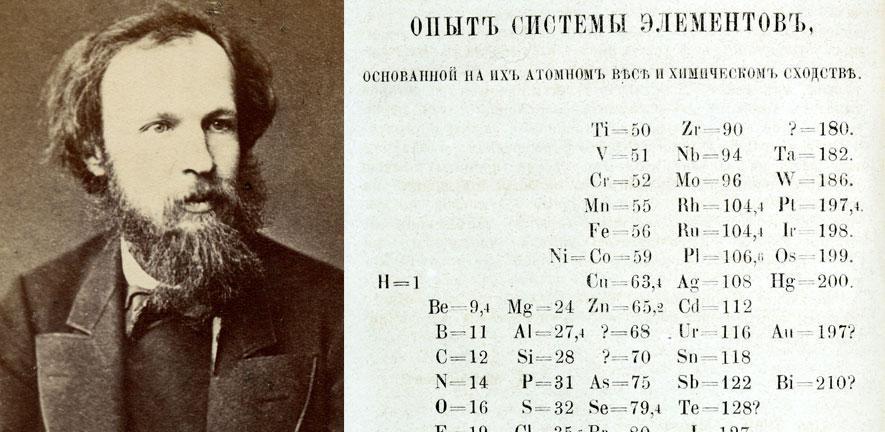
The free exhibition, part of the Cambridge Science Festival, is open to the public until 5 April. It was formally opened yesterday by Russian physicist Professor Yuri Oganessian, who has the unique distinction of being the only living person with an element (oganesson) named after him.
One hundred and fifty years ago this month, Russian chemist Dmitri Mendeleev first came up with his periodic system of the chemical elements – what we now think of as the Periodic Table. In celebration of this event, the United Nations has proclaimed 2019 to be the International Year of the Periodic Table of Chemical Elements.
We are celebrating this landmark anniversary here in the department. As well as curating the exhibition at St Catharine's, Dr Wothers is giving a series of demonstration lectures about the history of the Periodic Table. Three of them will take place here this Saturday, 16 March, at the department's annual Open Day.
Mendeleev’s original publication from March 1869 is on display at St Catharine’s, both in the form of his textbook, in which the table was hastily appended to the already-printed first volume, and in the form of the longer article which appeared in the first volume of the journal of the newly-formed Russian Chemical Society and in which Mendeleev fully discusses his system.
It is said only 80 copies of this latter volume were printed and the St Catharine’s copy is the only one available in the UK.
Despite this year’s anniversary, Mendeleev’s periodic table was not the first to be published. The exhibition compares Mendeleev’s table with the remarkably similar version published in October 1864 by British chemist William Odling, along with versions by his fellow countryman John Alexander Newlands from the same time.
Perhaps the most remarkable item on display is what is regarded as the very first periodic table published in 1862 – seven years before Mendeleev’s. The French mineralogist Alexandre-Émile Béguyer de Chancourtois first arranged the known elements by atomic weight and properties in 1862, in what can be considered the first periodic table. The form of his table is quite different: instead of plotting the elements in rows and columns, it is designed to be wrapped around a cylinder in order to align the elements into groups with similar properties.
However, Béguyer’s attempt was almost completely overlooked at the time. Since he was primarily concerned in trying to classify the elements from a mineralogical perspective, his system was largely ignored by chemists. But more importantly, his paper failed to include any diagram and without it, his text was incomprehensible.
The exhibition runs from March 12 to April 5, including weekends, and is open 9:00 am to 5:00 pm.
- This story first appeared on the University of Cambridge website.

